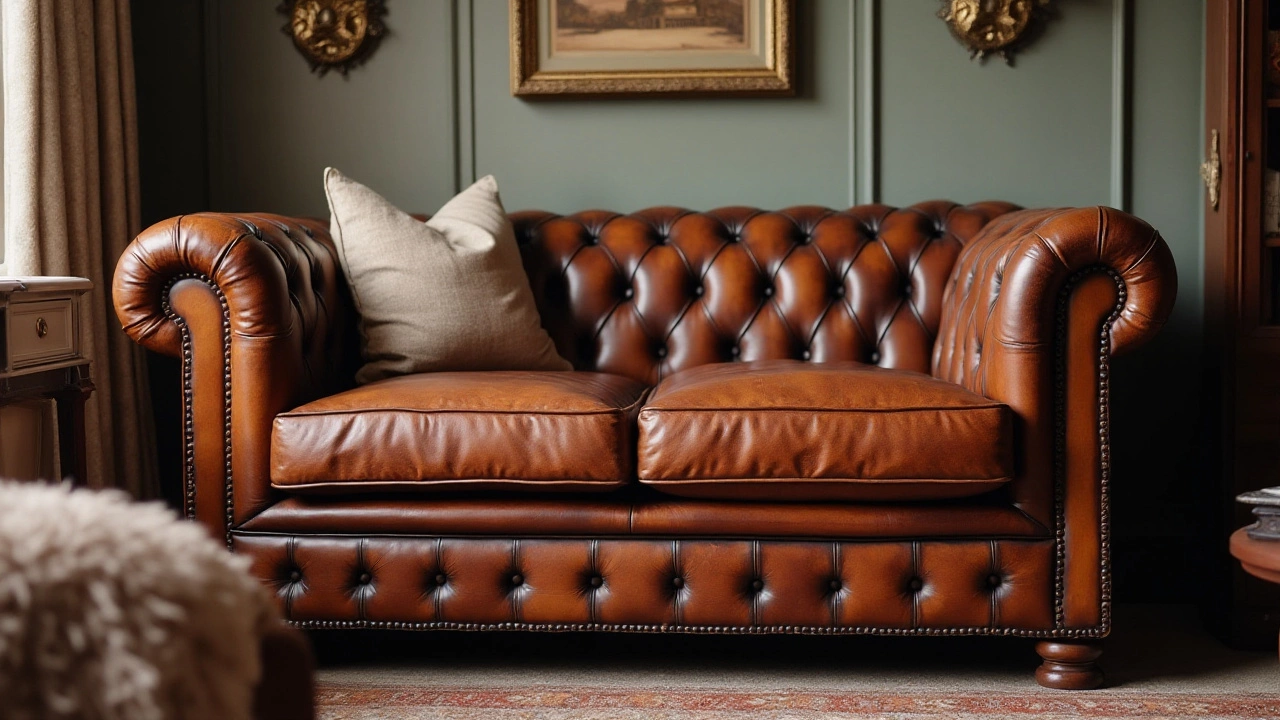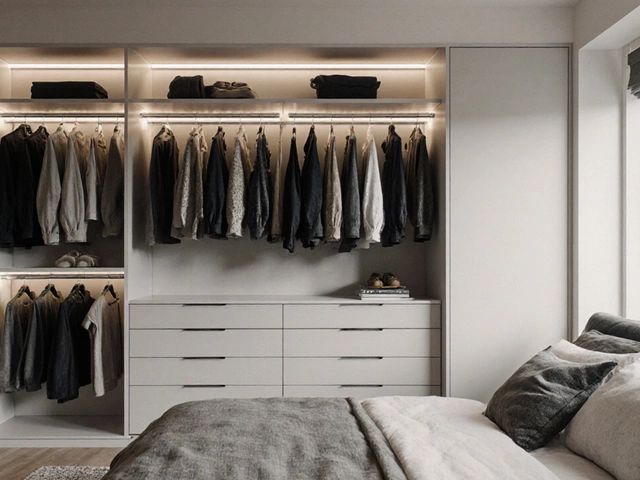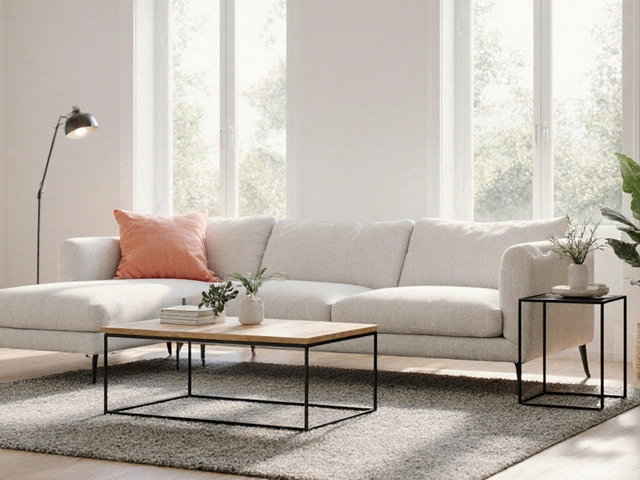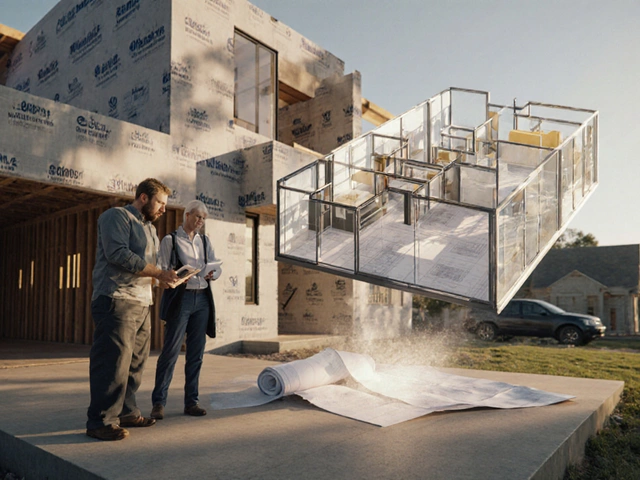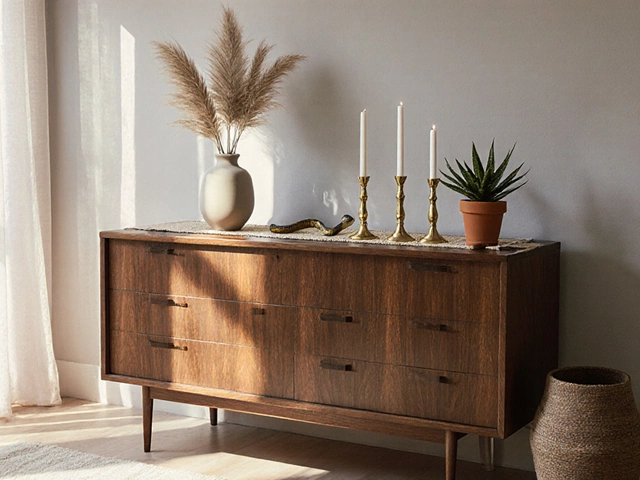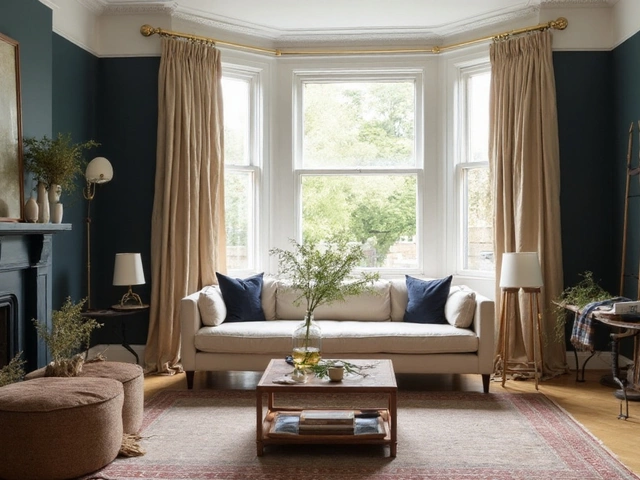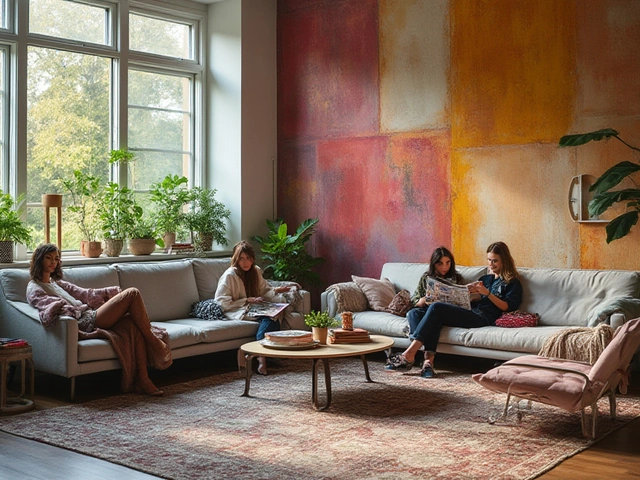When shopping for a new couch, it's easy to get lost in the sea of colors and styles. But beneath the exterior lies the true test of quality: the construction. A sturdy frame sets the foundation, ensuring that your sofa withstands the test of time—and countless movie nights.
Yet, a good frame is just the beginning. The fabric and filling are equally important components that can define not just the look and feel, but the longevity of your couch. Selecting the right upholstery can make all the difference in maintaining both appearance and comfort over the years.
As you sink into cushions, it's essential to understand how they're made. High-density foam or down plays a significant role in providing lasting resilience and relaxation. After all, the comfort of a couch is measured by how inviting it remains after years of use.
Lastly, craftsmanship and attention to detail elevate a sofa from ordinary to extraordinary. Skilled artisans put effort into each seam and stitch, creating a piece that reflects both quality and style. Recognizing these signs of superior workmanship ensures that your investment is well justified.
Frame Construction
When it comes to determining the quality of a couch, the frame construction serves as the backbone that can make or break the investment. A well-built frame ensures a sofa's longevity, providing a sturdy base that supports frequent use and heavy loads over years of relaxation and entertainment. Typically, quality frames are made from kiln-dried hardwood, such as oak, ash, or beech, which resist warping over time. The process of kiln drying removes excess moisture, preventing the frame from bending or breaking under pressure. Contrast this with softer woods like pine, which may be less costly but tend to warp or crack over long-term usage.
Another key aspect to consider is the joinery used in the frame. The pinnacle of sofa craftsmanship features techniques such as dowels, double dowels, or mortise-and-tenon joints, which provide unmatched strength and security. These traditional methods are staples in high-end furniture construction, ensuring that parts of the frame fit together snugly without the need for nails or staples, which can loosen over time. Some budget manufacturers may opt for simple corner blocks or metal fasteners in order to cut costs, often resulting in a less stable sofa that may creak or shift with movement.
It's important to note that a good-quality frame doesn't always mean it's heavy. While weight can sometimes be an indicator of a solid frame, precision craftsmanship and the use of durable materials can produce a strong but not overly cumbersome piece of furniture. As an expert in the furniture industry once stated, "True craftsmanship in a sofa allows you to feel the solidity and structure without needing a pair of weightlifter’s arms to maneuver it."
According to the American Society of Furniture Designers, a well-constructed furniture frame can last decades longer than one that is machine-made and reliant on adhesives rather than wood joinery.
Beyond these structural elements, keep an ear open when testing a sofa in-store. A quiet frame is a telltale sign of quality; it speaks to the integrity of the materials and methods used, whereas squeaks or creaks may indicate inadequate construction or stress points. Don’t be shy about flipping the sofa over to inspect beyond what catches the eye; many stores are happy to demonstrate the inner workings of a quality piece.
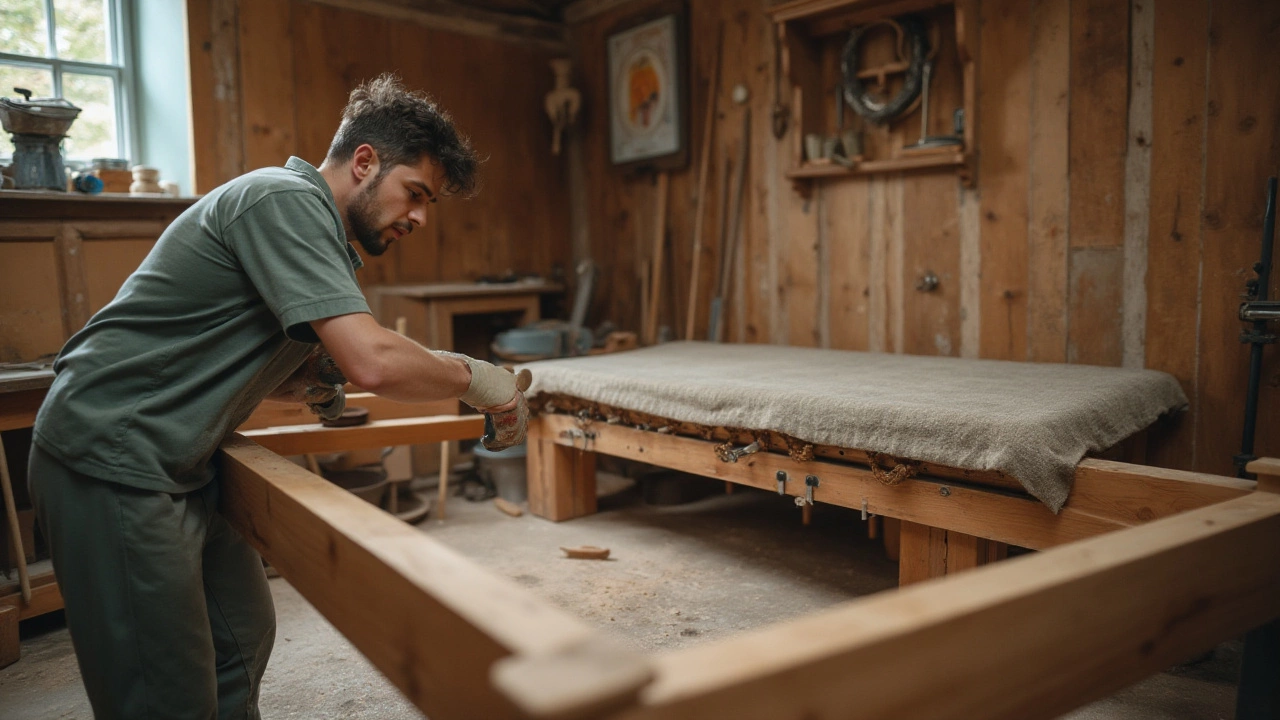
Upholstery Materials
When it comes to purchasing a new couch, the choice of upholstery materials cannot be overstated. It plays a central role not only in the durability of your sofa set but also in its aesthetic appeal and comfort level. Among the myriad choices, fabrics like leather, cotton, linen, polyester, and microfiber have distinct advantages and drawbacks to consider. Leather is a classic choice renowned for its luxurious feel and impressive longevity. It ages gracefully, acquiring character with time and use, making it a favorite for many. However, it can be more expensive and requires regular maintenance to prevent cracks and wear.
Cotton and linen offer a more breathable and casual look. They are often selected for their natural feel and comfortable texture, yet they might be prone to wrinkling and soiling. Stain treatments can enhance their suitability for families with kids like mine—Finn and Nora seemingly attract messes like magnets. Polyester and microfiber, on the other hand, are synthetic options known for their durability and resistance to stains and fading. These materials are perfect for everyday use and are easier to clean, which is a bonus for busy families.
In the realm of upholstery, blends are becoming increasingly popular, combining the best of natural and synthetic fibers to enhance the performance and longevity of the sofa set. Blends can resist stains and withstand wear, making them versatile choices for high-traffic areas. It's crucial to balance personal preferences with practical needs when deciding on the upholstery material. Experts often say, "Quality is not an act, it is a habit," a sentiment echoed by the legendary Aristotle but holds true for furniture selection. Additionally, understanding the 'rub count' or abrasion rating of the fabric can provide insight into its anticipated wear. This metric, often included in product information, measures a fabric's ability to withstand friction and pilling over time.
Finally, contemplating color and pattern can impact not just the sofa's look but also its maintenance requirements. Neutral tones might fade less noticeably over time, whilst vibrant patterns can cleverly hide stains or damage. However, intricate designs may come at the cost of overpowering or clashing with other decor unless carefully coordinated. Remember, the color and design you choose should harmonize with your living space, reflect your personal taste, and fit your family’s lifestyle, contributing to a cozy and welcoming home environment.

Cushioning and Comfort
When one thinks about a high-quality couch, the mind might wander to its visual appeal but the true treasure lies in its comfort. Cushioning is not just a mere component; it is the heart of a sofa that can make or break its inviting nature. The choice of cushioning materials plays a pivotal role in determining the comfort level, resilience, and lifespan of a couch. High-density foam is often regarded as a staple in quality sofas due to its ability to retain shape and offer support long after lesser materials would have faltered. But foam isn’t the only option. Materials like down feathers offer a luxurious softness, but they require regular fluffing to maintain their plush nature, catering to those who love a sink-in feel.
Alongside the choice of material, the construction of the cushions themselves is crucial. Multi-layered designs, combining various foam densities or incorporating springs, help achieve a balance between softness and support. This juxtaposition of firmness and give ensures the sofa remains comfortable whether it’s being used for a casual coffee chat or a lengthy Netflix binge. Some designs even include zoned support, which provides different cushioning levels in specific areas like the back or arms, acknowledging the varied needs our bodies demand over prolonged periods.
Renowned designer Ray Booth once said,
"Comfort is the new luxury. It's not about how long you sit or lay; it's about how you feel during and after/”This rings particularly true today as more people recognize the importance of investing in pieces that offer true relaxation. In this regard, a tried-and-true test involves seating oneself on the couch and observing if the cushion springs back to its original shape or if it remains indented—a clear indicator of how materials will hold up over time.
To help navigate the myriad of options, it's useful to understand how different cushioning impacts the feel and durability of a sofa. Let’s examine some types:
- Polyurethane Foam: Known for its firmness and durability, it is resistant to sagging.
- Memory Foam: Offers customized support by molding to your shape, although it may sometimes feel warmer due to its density.
- Feather or Down: Perfect for a plush, sink-in comfort, though it requires regular maintenance to prevent flattening.
Considering these materials and designs goes a long way in ensuring a purchase that keeps comfort central to its value proposition. By understanding the nuances of cushioning, not only do you elevate your comfort levels, but you also ensure the sofa remains a steadfast companion to your daily life.

Craftsmanship and Design
When investing in a high-quality couch, craftsmanship and design are pivotal elements that combine not just aesthetics but functionality and longevity. Every piece of furniture tells a story, and this narrative is often carried by the skill and dedication of those who build it. Consider the attention to detail; the precision of each stitch, seam, and join, all of which contribute to an elegant and durable finish. Renowned craftsmen put their expertise into each component, ensuring the sofa isn't just a seating apparatus, but a work of art to be cherished. Skilled artisans often select superior materials, like sustainably sourced wood or quality steel for frames, ensuring that the piece can withstand years of use.
Design is where form meets function, and for a couch, this means balancing a contemporary look with everyday usability. Modern sofas often feature sleek, minimalist designs that can easily adapt to various styles of decor, from modernist urban spaces to cozy country homes. Yet, it's essential to remember that design also impacts how we interact with our living spaces. A well-designed sofa doesn't just look good; it enhances the comfort and functionality of a room, providing a welcoming environment. The selection of upholstery colors and patterns can redefine a room's mood, adding vibrancy or instilling tranquility, depending on personal preference. Notably, fabrics like leather or tightly woven textiles are not just chic but offer durability against wear and tear.
One cannot overlook the importance of innovation in couch design. Modular sofas, for instance, offer flexibility for changing room layouts, allowing you to tailor the seating arrangement as required. Another trend is incorporating technological advancements—consider couches with ergonomic features or those that offer smart storage solutions unseen at first glance. In some cases, the fusion of technology and traditional craftsmanship can lead to exceptional results. In a 2019 survey, it was found that 45% of homeowners prioritized sofas with hidden storage or charging ports, underscoring the demand for practical yet elegant furniture in modern homes.
Quality craftsmanship often comes with certain assurances such as warranties, signaling the manufacturer's confidence in their product's longevity and durability. Brands that have been around for decades often carry a reputation for excellence, built on years of producing reliable and beautifully designed furniture. Investing in a trusted name often means that's what you'll be getting—superior quality and peace of mind. As renowned designer Charles Eames once said,
"The details are not the details. They make the design."This perfectly encapsulates the importance of meticulous attention to every element, from the type of stitching to the finishes of the wood or metal accents. Ultimately, the hallmark of a truly captivating sofa lies in its ability to blend impeccable design with expert craftsmanship, creating a piece that not only enhances a space with style but serves its occupants for years to come.
